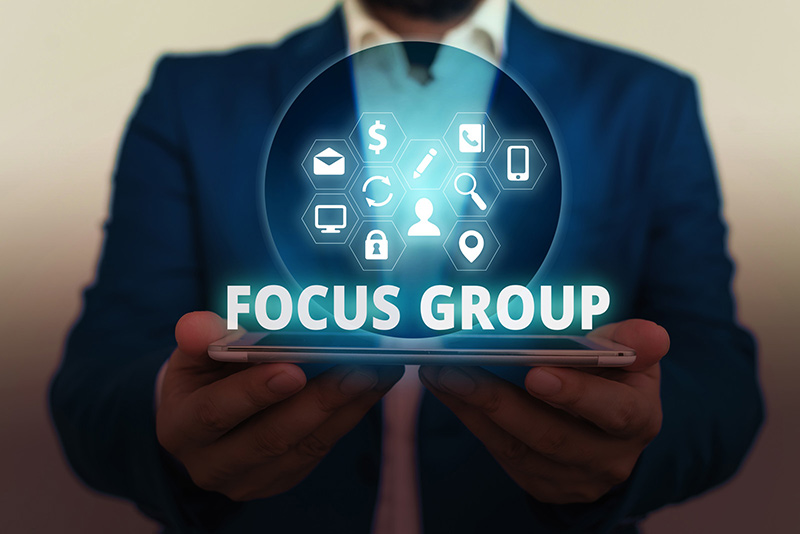If you want to gather additional information as an adjunct to quantitative data collection methods or to get more in-depth information on perceptions, insights, attitudes, experiences, or beliefs, make use of focus groups. They are a group of individuals who share similar characteristics or common interests in certain products, services, or concepts. Hosting a focus group discussion is a valuable qualitative research method – which means that the data is descriptive and cannot be measured numerically – for gathering data whether it be a small group of 5 or a large group of 15. However, this method is even more valuable when they are transcribed, because, focus group transcriptions help market researchers get the qualitative data and insights they need. With the help of an experienced focus group transcription service provider, you can accurately reproduce the proceedings of the discussion so that the participants’ comments can be evaluated effectively.
Based on a predetermined set of topics, a facilitator guides the focus group and will also create an environment that encourages participants to share their perceptions and points of view. According to Rev, every year, global businesses spend billions of dollars on focus groups where more than $800 million of this is spent in the United States alone. From this we can understand that focus group discussions are strategic and helpful research surveys that can aid you in learning about your clients.
There are different types of focus groups, let’s take a look at them:
- Single Focus Group: The most common and classical type of focus group discussion, single focus group involves a single moderator asking questions and organically discussing a topic with a small group of respondents as one group in one place. This type of focus group discussion is widely used by both researchers and practitioners across different disciplines.
- Two-way Focus Group: This type involves two groups-each with its own moderator – where one group actively discusses a topic, whereas the other observes the first group. By listening to what the other group thinks and says, the observing group is able to facilitate more discussion and potentially draw different conclusions with additional insights.
- Dual Moderator Focus Group: In this type of focus group, two moderators work together, each performing within the same group. That is, when one moderator is in charge of posing the questions, the other makes sure the questions are answered. The great advantage of dual moderator focus group is that it results in a more productive session. That is, with the division of roles among the two moderators you can ensure that participants stay on task with their discussion, whereas with a single moderator it is easier for them to get distracted.
- Dueling Moderator Focus Group: Though this type of focus group also involves two moderators just as dual moderator focus group, here two moderators purposefully take opposing sides on an issue or topic under investigation. The purpose of this type of focus group is that it helps to explore opposing sides of an issue and generate new ideas by introducing new ways of thinking and varying opinions. That is, by supporting alternate opinions, moderators can introduce discussion points for lead respondents to consider and draw new conclusions, prompting additional insights.
- Respondent Moderator Focus Group: Here, researchers recruit some of the participants to take up a temporary role of moderators, in order to limit unintentional bias. With this focus group discussion, it is believed to have a change in the dynamics of the group and generate more varied and honest responses as it influences participants’ answers.
- Remote/Online Focus Group: Especially very important for these days, the remote or online focus group gathers participants from different locations – using a teleconference or online format – that might otherwise be restricted. With the challenges posed by the COVID-19 pandemic, the need for remote focus groups is booming these days, because, in an online focus group, participants interact through a video call where the moderator asks the questions and leads the discussion.
Though this type of focus group is not as revealing as a face-to-face focus group discussion, remote focus group poses some advantages over them. That is, it is a good option for companies wanting to explore more personal topics or that which have limited time and money to spend on the more in-depth focus group techniques.
Be it any type, focus group discussions are preferred over interviews, as they draw out group members to interact and influence each other. However, transcribing focus group data can be expensive and time-consuming to handle on your own, as these recorded conversations are different from a standard interview or basic audio file. These audios would often have background noise, quiet conversations, and non-verbal cues which complicate the situation. So, to make the most of your qualitative research, you need to transcribe a focus group discussion the right way and for that you could rely on focus group transcription services from a reliable digital transcription service provider. Such providers can ensure well-formatted, accurate documentation that can be reviewed to summarize the findings and identify the key points of discussion.
Stay ahead in your industry with our fast and accurate transcription services. Get in touch with us to see how we can assist you.




